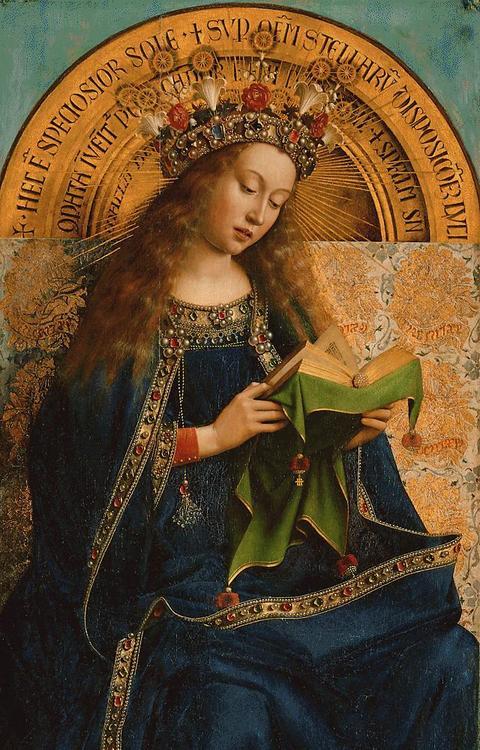“What is Mary Reading?”

“Kissing a painting or a statue was a common way of expressing devotion…” states Briggs and Burke in A Social History of the Media: From Gutenberg to the Internet. (p. 7) Visual and tactile are the icons and statues of Christianity. There are no words needed when an illiterate individual experiences the emotions of beloved icons painted and molded with colors and gold. One glance of a painting or sculpture can cause an epiphany. Even in modern times icons or images of well-known individuals are used to sell an idea. Iconoclasts knew the power of these images and destroyed them thereby trying to destroy the messages that they believed they communicated. Some believed these icons might be recipients of the worship and devotion that only the Almighty God should receive. To this day we see icons in Catholic and Orthodox churches but not typically in Protestant ones. Let’s turn this discussion of icons towards one particular icon, that of the Blessed Virgin; and specifically an image of her in the Ghent Altarpiece begun by Hubert van Eyck and completed, after his death, by his younger brother Jan van Eyck.
In the Altarpiece, the Virgin Mary is reading. But what is she reading? Briggs and Burke state, “The decline after 1520 of images of the Blessed Virgin reading, images which had been relatively common in the late Middle Ages, appears to have been an early response to what might be called the demonization of reading by the Catholic Church.” (p. 51) In this portion of the book the authors are discussing the history of reading and specifically leisure reading. However, in other research it states that the symbolism of Mary reading depicts her open mind to the will of God, her searching and understanding. She is the book which tells the story of God to humankind. But how do we reconcile these two ideas about the book in Mary’s hands? If this image is communicating something spiritual and symbolic of God’s plan to manifest within her flesh, then why would the Catholic Church respond negatively to this icon? Was it the idea of women reading in general that was rejected or was there just no longer a desire for this particular image of Mary?
If she lived, as some scholars suggest, from approximately 20 B.C. to 45 A.D. then there is a variety of leisurely books she might have enjoyed. Or perhaps Ghent had his own idea of what Mary was reading. Was Mary doing some leisure reading or is the book symbolic? What do you think?
What is Mary reading?
A Social History of the Media: From Gutenberg to the Internet by Asa Briggs and Peter Burke 3rd ed.
http://campus.udayton.edu/mary/meditations/olbook.html
http://www.newadvent.org/cathen/15464b.htm
#dminlgp #lgp3 #briggs #virginmary #blessedvirgin #mary #reading #women #icons
Leave a Reply
You must be logged in to post a comment.